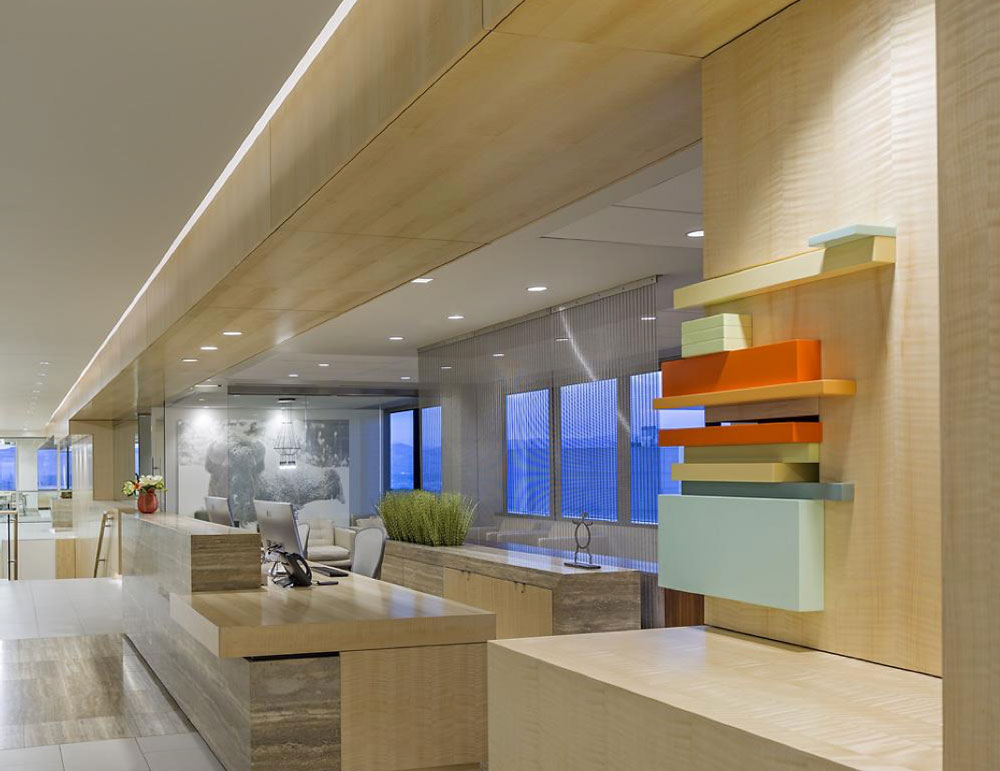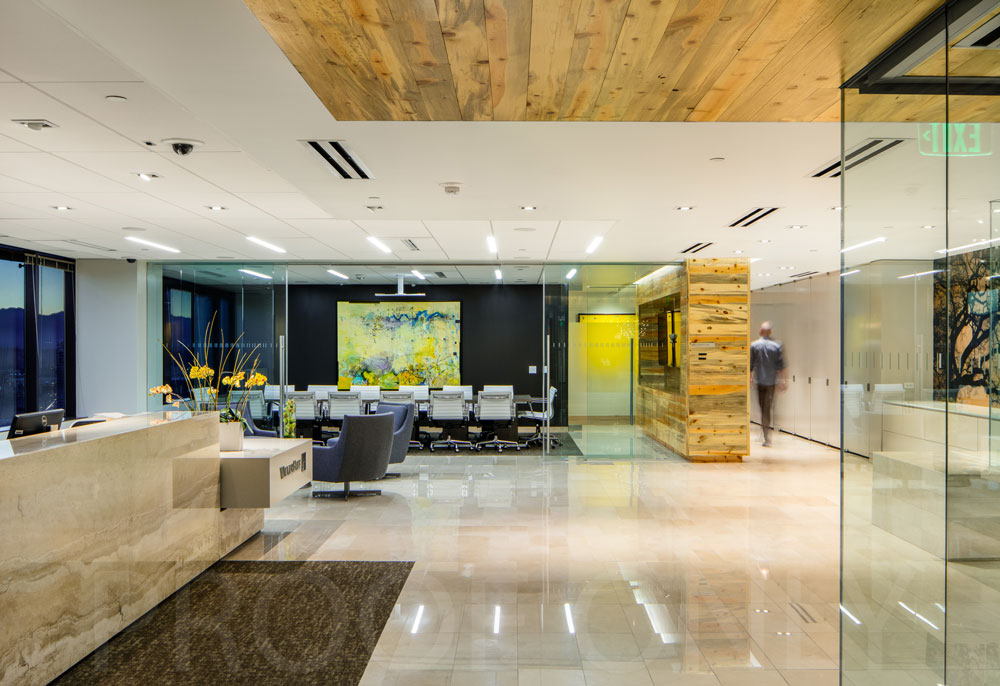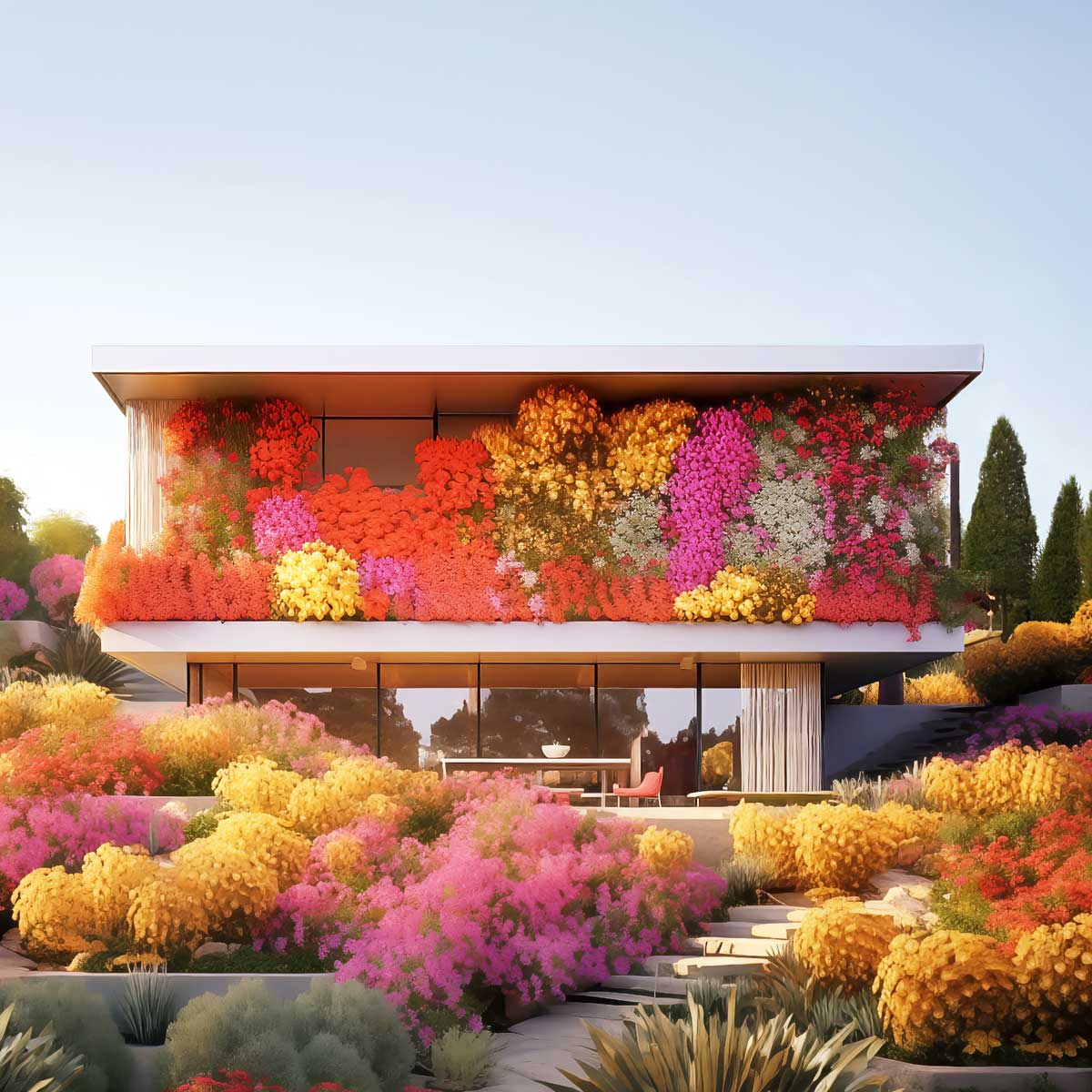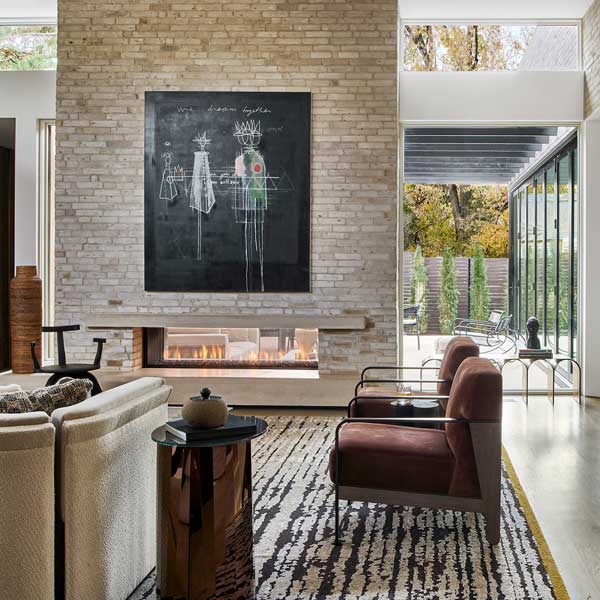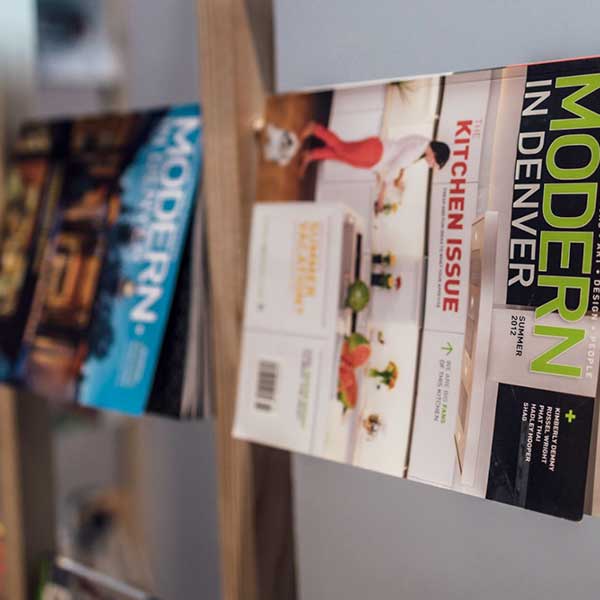DON’T THROW AROUND THE WORD “STYLE” WITH INTERIOR DESIGNER GILLIAN HALLOCK JOHNSON. SHE’LL HAVE NONE OF IT.
“I basically start any project by abandoning any notion of ‘style,’ ” says Johnson, an award-winning principal at Denver’s Burkett Design who specializes in commercial interiors. “Style in and of itself can easily become a manifesto, and then the design is stuck in one dimension. Once you abandon the notion of a particular style, clients can capitalize on their own personality and create their own style.”
Don’t focus on “trends” either. “So many workplace trends—like wireless everything, collaborative spaces, lots of shiny materials and whiz-bang supergraphics—are trying to create spaces that will attract millennials back into the workplace. Instead, they can be so dehumanizing. The way to draw people into an office is to find a universal language that speaks to all generations, something that has artistry and craft and warm, natural materials like wood that bring the outside in.”
At Holland & Hart Denver, the unexpected artistry of the stacked lacquer blocks embedded in the wood spine wall area sculptural reference to “stacks” of law books that are relatively absolute today.
And as for “decoration”? “I strive for nothing superfluous in a design, so there’s nothing purely decorative in a space. The more you can distill a design down to its most abstract, simple essence, the more alluring it is. I learned that from architect Aldo Rossi when I studied in Venice. The more platonic the form, the more people can connect with it, and the deeper it will reach into their soul. I spend a lot of time editing out superfluous details and really focusing on one powerful gesture—like a spine wall that travels the entire length of a space—and letting that take center stage.”
Johnson, who has worked for 18 years at Burkett, prefers designing commercial interiors, “because I want to have a positive impact on a broader range of people.”
The partners of the new WilmerHale Denver office wanted a design with an expansive outward-looking view to the mountains. Precise detailing, layered glass walls and the modern use of rustic materials such as beetle-kill pine and stone convey a natural warmth, while architecturally emphasizing the firm’s expertise and personality. The space is edited down to the simplest forms, allowing their art collection to provide color and punctuation.
The Darien, Conn., native, who grew up in a family of designers and artists, first came to Colorado as a child to go to camp; at age 13, she enrolled in the artsy Fountain Valley School in Colorado Springs, then earned her undergrad degree in art history from the University of Colorado. A post-graduation job at a top art gallery in Aspen gave her a glimpse into her future: The gallery, which displayed the works of such now-famous artists as glass artisan Dale Chihuly and ceramicist Victor Babu, “made me realize that I wanted to work with spaces—and that meant architecture.”
After earning a master’s degree from the University of Colorado College ofArchitecture and Planning, Johnson worked at a couple of local firms, including Anderson Mason Dale, where she met her husband, architect Ron Mason. “If I could have a dinner party and invite anyone I wanted, I would start with my husband because his designs are simple yet poetic. I would bring him back in time with me to Lorenzo de Medici’s court to hear Lorenzo talk about [Filippo] Brunelleschi and Michelangelo and even Machiavelli,” says Johnson, an Italophile who studied at the Instituto Universitario di Architettura di Venezia, speaks fluent Italian and spends every September in Italy.
Those annual visits help inspire her designs here. “My body of work is very relationship based,” says Johnson, “so we always go through a lengthy interview process, sometimes talking to everybody in a firm.” Attorney John Moye, a longtime client (Johnson has designed several iterations of his law offices), describes Johnson enthusiastically as “one bubble off plumb, if you know what I mean.” That is the sincerest praise Moye can offer. “She comes up with solutions that are not what you’d expect but that make a project spectacular. Her ability to use curved walls, for example, which law firms don’t usually get, and then build in a niche for art—by the time she finishes, it’s like a museum piece.”
Those unique, highly personal touches, Johnson says, are what she seeks with every project. “The highest compliment I can receive is when I hear a client taking credit for their new design. That’s how I measure my success.”



